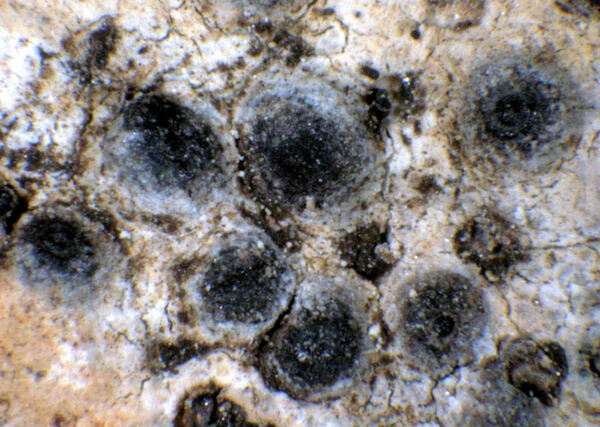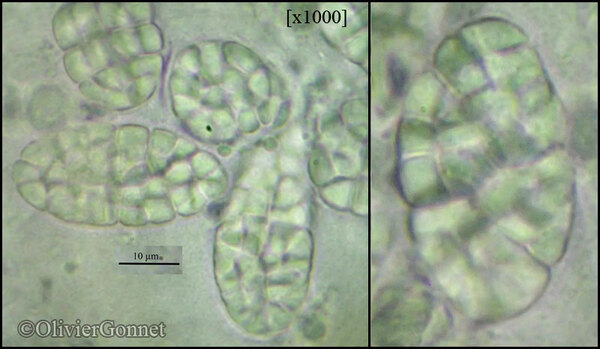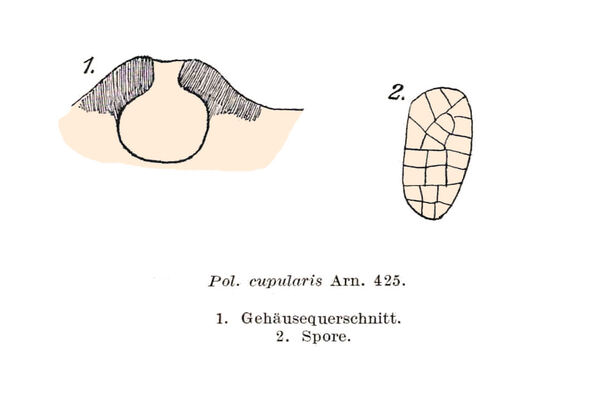Polyblastia cupularis A. Massal. f. cupularis
Ric. Auton. Lich. Crost.: 148, 1852.
Synonyms: Polyblastia flavicans Müll. Arg.; Polyblastia intercedens (Nyl.) Lönnr. non sensu Th. Fr.; Polyblastia lutosa Zschacke; Polyblastia pallescens Anzi; Thelotrema acrocordiaeforme Anzi
Distribution: N - Frl, Ven (Lazzarin 2000b), TAA (Nascimbene & al. 2022), Lomb, Piem (Isocrono & al. 2004), VA (Favero-Longo & al. 2006, Isocrono & al. 2008, Favero-Longo & Piervittori 2009), Emil (Fariselli & al. 2020). C - Tosc, Umb (Genovesi & Ravera 2001, Ravera & al. 2006), Laz, Abr (Nimis & Tretiach 1999).
Description: Thallus crustose, endosubstratic to thinly episubstratic, whitish to pale grey, sometimes with a brownish tinge, continuous to cracked, rarely with marginal black lines. Perithecia black, forming moderately prominent projections 0.4-0.7 mm across, not covered by thallus, with a slightly depressed apex and a finally widely gaping ostiole. Involucrellum well-developed, clasping exciple and slightly spreading in lower part; exciple dark throughout; hamathecium of periphyses and periphysoids, interascal filaments absent. Asci 8-spored, clavate, K/I-, fissitunicate, the wall thickened above, with an ocular chamber, dehiscent by extrusion of an endotunica to form a delicate rostrum. Ascospores muriform, hyaline, ellipsoid to broadly ellipsoid, (21.5-)26-39(-45) x (14-)17-23(-29) μm. Photobiont chlorococcoid. Spot tests: K-, C-, KC-, P-, UV-. Chemistry: without lichen substances.Note: a circumboreal to arctic-alpine species found on hard rocks, including dolomite and calciferous schist, in rather sheltered and humid situations; most frequent in the Alps, much rarer along the Apennines. Here the species is treated in a broad sense. A dubious record from Campania (see Nimis 1993: 554) is not accepted.
Growth form: Crustose endolithic
Substrata: rocks
Photobiont: green algae other than Trentepohlia
Reproductive strategy: mainly sexual
Commonnes-rarity: (info)
Alpine belt: rather common
Subalpine belt: rather rare
Oromediterranean belt: very rare
Montane belt: rare
Submediterranean belt: absent
Padanian area: absent
Humid submediterranean belt: absent
Humid mediterranean belt: absent
Dry mediterranean belt: absent
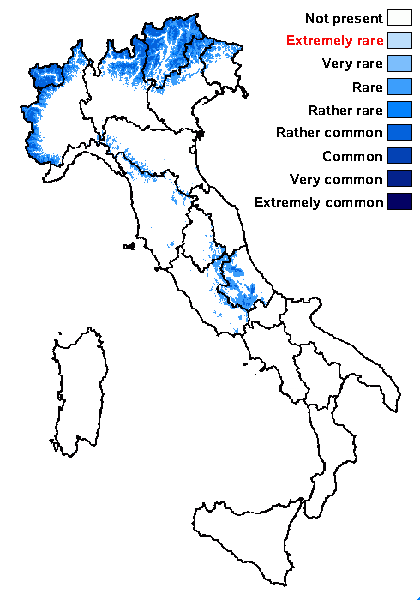
Predictive model
Herbarium samples
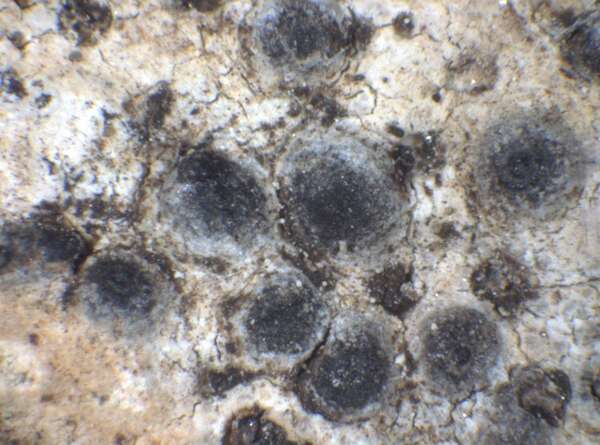

P.L. Nimis; Owner: Department of Life Sciences, University of Trieste
Herbarium: TSB (6471)
2003/03/12
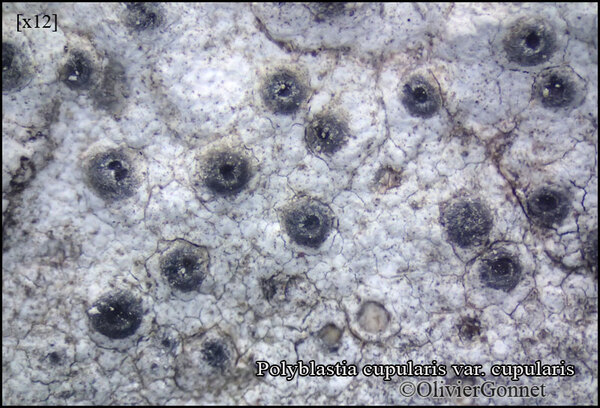
Courtesy Danièle et Olivier Gonnet - Source: https://www.afl-lichenologie.fr/Photos_AFL/Photos_AFL_P/Text_P_3/Polyblastia_cupularis_cupu.htm
France, session AFL 2015 dans le Lot

Courtesy Danièle et Olivier Gonnet - Source: https://www.afl-lichenologie.fr/Photos_AFL/Photos_AFL_P/Text_P_3/Polyblastia_cupularis_cupu.htm
France, session AFL 2015 dans le Lot
Growth form: Crustose endolithic
Substrata: rocks
Photobiont: green algae other than Trentepohlia
Reproductive strategy: mainly sexual
Commonnes-rarity: (info)
Alpine belt: rather common
Subalpine belt: rather rare
Oromediterranean belt: very rare
Montane belt: rare
Submediterranean belt: absent
Padanian area: absent
Humid submediterranean belt: absent
Humid mediterranean belt: absent
Dry mediterranean belt: absent

Predictive model
| Herbarium samples |


P.L. Nimis; Owner: Department of Life Sciences, University of Trieste
Herbarium: TSB (6471)
2003/03/12

Courtesy Danièle et Olivier Gonnet - Source: https://www.afl-lichenologie.fr/Photos_AFL/Photos_AFL_P/Text_P_3/Polyblastia_cupularis_cupu.htm
France, session AFL 2015 dans le Lot

 Index Fungorum
Index Fungorum
 GBIF
GBIF
